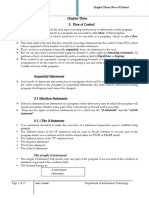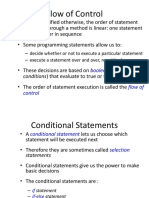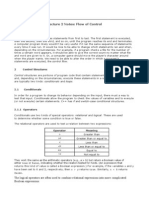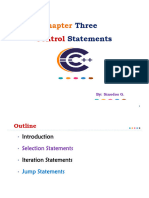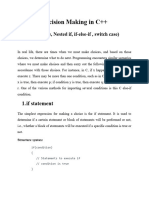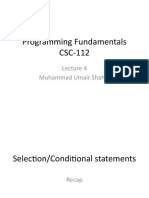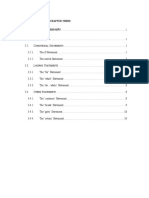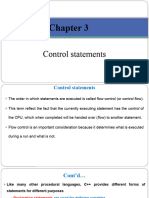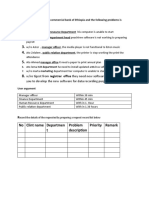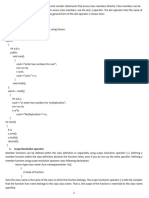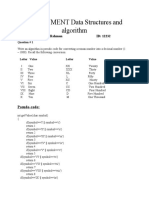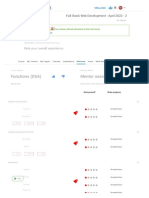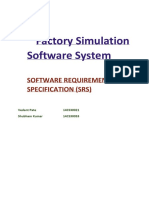0% found this document useful (0 votes)
11 views24 pagesITEC1030 - Ch04 - Control Statments of Programming
The document discusses control statements in programming, focusing on flow control, sequential statements, selection statements (if and switch), and repetition statements (for, while, do-while). It explains how these statements allow programmers to dictate the execution flow of a program based on conditions and iterations. The document provides syntax examples and explanations for each type of control statement.
Uploaded by
tibemekonenCopyright
© © All Rights Reserved
We take content rights seriously. If you suspect this is your content, claim it here.
Available Formats
Download as PPTX, PDF, TXT or read online on Scribd
0% found this document useful (0 votes)
11 views24 pagesITEC1030 - Ch04 - Control Statments of Programming
The document discusses control statements in programming, focusing on flow control, sequential statements, selection statements (if and switch), and repetition statements (for, while, do-while). It explains how these statements allow programmers to dictate the execution flow of a program based on conditions and iterations. The document provides syntax examples and explanations for each type of control statement.
Uploaded by
tibemekonenCopyright
© © All Rights Reserved
We take content rights seriously. If you suspect this is your content, claim it here.
Available Formats
Download as PPTX, PDF, TXT or read online on Scribd
/ 24




